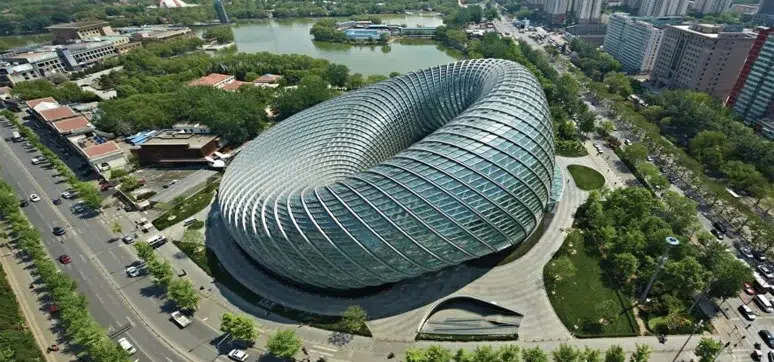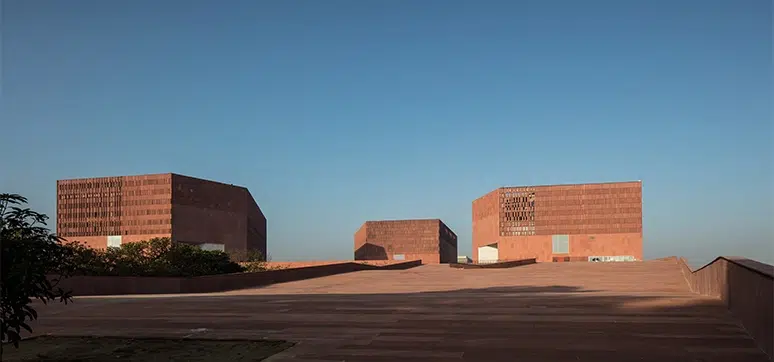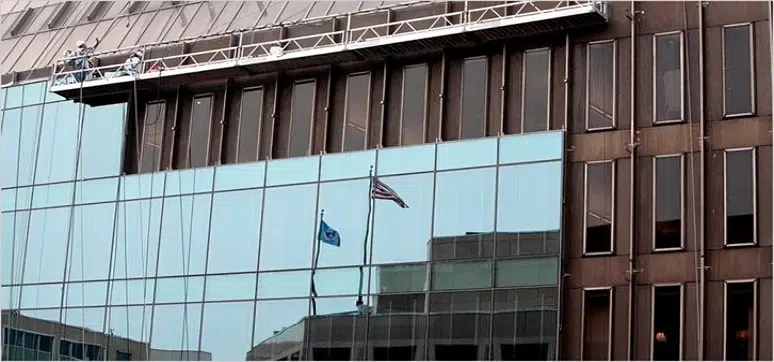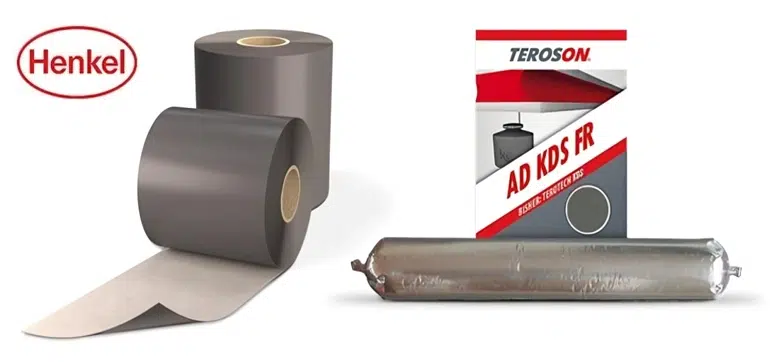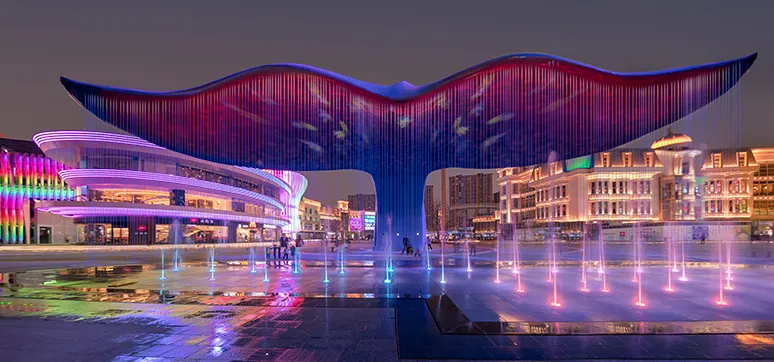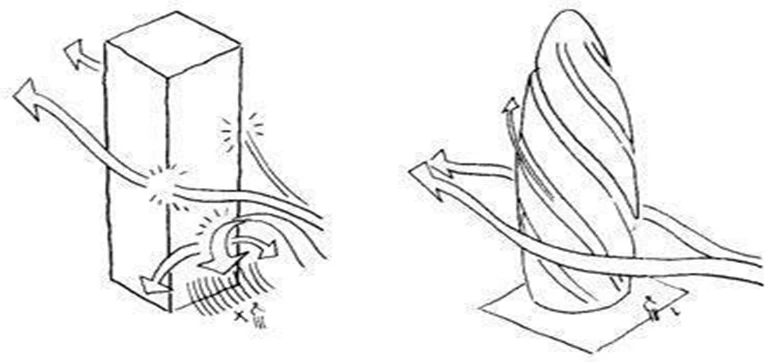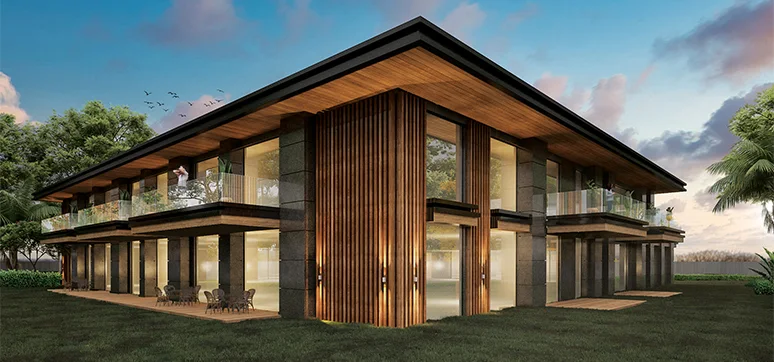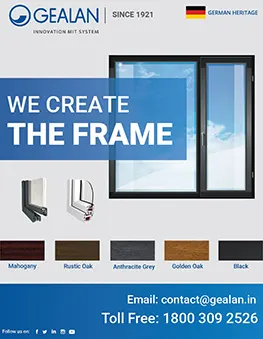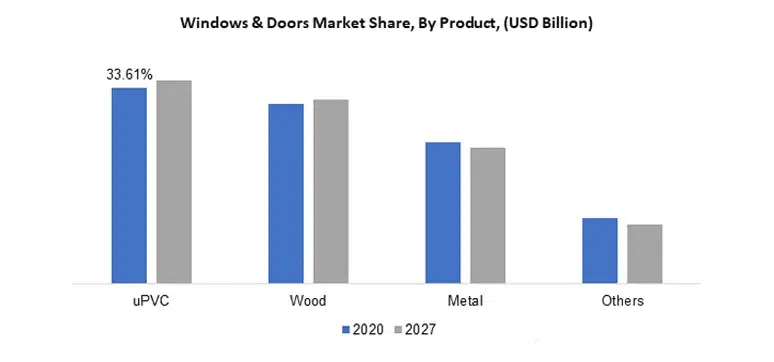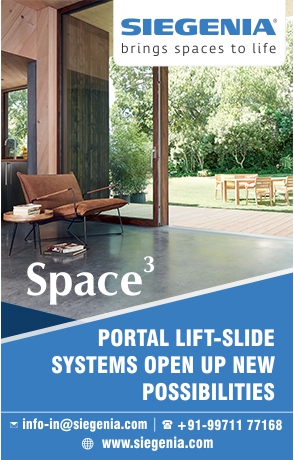Insights into the Building Envelopes of the Future
By:
By 2050 it is anticipated that there will be an extra two billion city dwellers across the globe and the general consensus is that sustainability can only be achieved by minimising the negative environmental impact of buildings by efficiency and moderation in the use of materials, energy, development space and the ecosystem at large.
A more sustainable approach to future façades is needed. There must be a common global goal, rather than individual agendas, and innovation of new energy efficiency products and optimisation of current façade space to create more sustainable buildings.
This year World Environment Day on June 5 marked the formal launch of the United Nations Decade on Ecosystem Restoration (2021-2030), a decade which efforts in preventing a major climate change and assisting the recovery of ecosystems that have been degraded or destroyed, as well as conserving the ecosystems that are still intact.
It seems logical that the built environment and façade space could help play a big part in supporting future sustainability objectives. Looking at the finite resources, we requested a few experts including architects and façade consultants to define sustainable development considering façade design for urban buildings. Here is what they say:

Principal Architect and Founder, ACad Studio
Ar. Aayush Chaudhary, Principal Architect and Founder, of ACad Studio believes that sustainable architecture is a comprehensive and complex subject. Urban buildings consume lots of energy. They need to be designed as per the principles of sustainable development. For me as an architect, says Ar. Chaudhary, occupant comfort level is important. “So I define sustainable development as a new approach to minimise resource consumption, reduce maintenance necessities, recycle material after building’s lifespan and promote the quality of built material”.
The goal of sustainable development is very clear, i.e., to provide the resources to the present generation without hampering the requirements of future generations, without causing any damage to the environment, he adds.
For Renuka Sharma, Façade Technical Consultant – Independent, sustainable development means that the development should be done in such a way that the system can be continued with no ill effects. “An ideal sustainable façade is one that uses the least amount of energy to maintain a comfortable, healthy and secure environment, which has a less negative impact on the environment. A building façade is the skin of the building which separates the exterior from the interior and occupies a special position in sustainable architecture and urban design. The design of a sustainable façade involves exploring ways in which the building’s external envelope can provide natural ventilation, while also contributing to the energy requirements of its occupants.

Façade Technical Consultant
– Independent
According to Ar. Sakshi Jindal, Sustainability Consultant, Climate Corp Fellow at Environmental Defence Fund, for complying with the world environment day theme of eco-system restoration, India requires more effort of governance than design interventions for the façade. One of the very popular interpretations of restoring the ecosystem is restoring what is being consumed. With Paris Agreement, this matric boils down to measuring the ecosystem restoration with the restoration of carbon emissions. More the Green House Gas (GHG) emissions, the more should be sequestering of carbon.
This can be done with more strict executive rules from the Government. For example, regulated forestry practices for the use of wood for CLT construction. Forest absorbs the carbon from the atmosphere and conversion of wood to CLT keeps that carbon captured for many years. However, on the design side, the use of salvaged or recycled material for façade design is one of the most common practices adopted by the designer. The three R’s of sustainability play a vital role, i.e. Reduce, Reuse and Recycle, says Ar. Jindal.
Sustainable development with regards to ecosystem restoration can be understood by the use of E[m] energy diagrams which essentially study buildings and their environment as an ecological system where resources natural (sun/water/wind) or artificial (electric/gas) have different qualities and are considered flows of energy, points out Mansi Dhanuka, Senior Architect, Environmental Building Designer, Jacobs.

Sustainability Consultant, Climate Corp Fellow, at
Environmental Defence Fund
The façade or the envelope is the interaction of these resources (flows) to produce one or more outflows of energy that ultimately contribute to the interior conditions of the building. Everything is a resource that has its cycle and we need to understand the path/ life cycle of these resources on a given site/shelter or setting while designing façades, says Dhanuka.
See below E[m]ergy Diagram for Bullitt Center located in Seattle – LBC certified building, it depicts all of the different resources enting and leaving the site.
According to Ar. Anurag Pashine & Ar. Pallavi Pashine – Principal Architects, Salankar Pashine & Associates, façade design is an amalgamation of form and function. The aesthetics provided by the façades must be augmented by supreme functional design as well.
Designers should plan façade of buildings that will need minimalistic maintenance, complement and add value to the built environment, reduce power consumption, and construction hazard and suits the climatic conditions, states says Ar. Namit Jain, Principal Architect, Square Design. With the fast-changing socioeconomic situation and pandemic lessons, we have been compelled to realise what is a necessity and what is not, continues Jain. Ecosystems are naturally present and are damaged hugely in the processes of development. Only ecosystem restoration in a natural process and sustainable model of development in our urban infrastructure and developments is the way to look at, he adds.

Senior Architect,
Environmental Building Designer, Jacobs
As a step towards sustainable development, presently, building façades are designed to be more energy-efficient and to achieve improved daylighting, observes S.N. Maanvizhi, Discipline Manager – Architect, L&T Technology Services Limited. Sustainable development is a continuous process and we need to keep focusing on improving the building façade design with the evolution of technologies. Building façades need to be looked at as a source of harvesting energy. Solar photovoltaic façade using amorphous silicon glass technologies creates the building to be more self-sustaining by using solar energy with is freely available.
SUSTAINABLE FAÇADE MATERIALS
It is undeniable that the impact the AEC industry has on the environment is huge. With a renewed focus on sustainable construction, many clients and companies have released alternative materials to build stunning façades that are utilitarian & aesthetically pleasing, say Ar. Anurag & Ar. Pallavi Pashine.
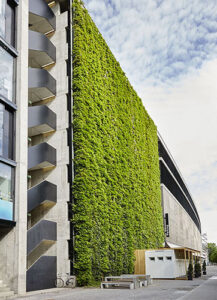
Architects need to adapt to designing intelligent façades that can mold to the needs of the client while also responding to the dynamic changes in the environment. Wading into automation and cyberspace is the best way to use intelligent façades, points out Ar. Pashine. While the number of façades created with each construction cannot be reduced, recycled materials can be used, such as repurposed glass, cork, and bamboo. All these materials can be replaced with regular glass or metal without leaving a large carbon footprint.
Furthermore, clients are also looking into prefabricated façades, as it is the future of façade designs. Transportation costs aside, prefab façades aid in saving a lot of time and human involvement that further helps in reducing the overall construction time. Thereby creating a direct impact on the sustainable quotient for a façade.
THE ROLE PLAYED BY THE THREE R’S (REDUCE, REUSE, RECYCLE) IN DESIGNING & INSTALLING A FAÇADE
The human population is growing very fast throughout the world leading to large-scale urbanisation, pollution, waste generation, water scarcity, and increased energy consumption, resulting in the depletion of non-renewable resources. The only way forward is to promote the 3R’s rule – Reduce, Reuse and Recycle, says Sharma.
The first R is ‘Reduce’, which means a reduction in the use of nonrenewable materials, preferably using locally available materials, reducing energy consumption, and minimise and managing waste generation onsite, thus reducing the ecological footprint. The use of modern design concepts like 3D modelling, BIM, etc helps to minimise errors which reduces wastage during construction.

Principal Architects, Salankar Pashine & Associates
The 2nd R is ‘Re-use’ which means most of the materials that go into the façade can be reused – for example, flashings, aluminium frames of claddings, windows, doors, roofing materials, etc. When old buildings are demolished we can develop New Age façades by reusing stones, and bricks from these buildings thus giving a contemporary look to the modern façades.
The 3rd R is Re-cycle which means most of the materials used in the façade should be recycled. Aluminium, glass, and structural steel all these materials are recyclable. Sustainability can be achieved only through means of optimised design solutions, maintenance free, localised materials, minimal use of resources, using materials that have the potential of reuse and adaptability to climatic conditions, and maximising recycling capacities of materials and their uses, says Ar. Namit Jain. We have many solutions available and to be explored and debated to find an optimised solution based on location and project needs.
According to Ar. Chaudhary, when the façade is designed or installed, some waste is generated which can be reused and recycled. Yes, 3 R’s play an important role and their role can not be defined specifically. When we design and install a façade, the focus is to eliminate the need for cooling and heating. We can even decrease the use of harmful materials in designing the structure. The lightweight façade system needs to be designed to follow the concept of reduction. Instead of demolishing existing structures, the materials like solid wood, glass, structural steel parts, etc., can be reused. The building itself can be reused. After completion of the façade, the waste generated in designing and installing can be used to create new elements to give an appealing look.

Principal Architects,
Salankar Pashine &
Associates
Agreeing with Ar. Chaudhary, Ar. Jindal too points out that the three R’s of sustainability holds good in all conditions. When it comes to designing and installation of a façade these principles can help in achieving lower emissions and energy efficiency. The best practice to follow is to design the window-to-wall ratio and façade design with appropriate shading such that it reduces the requirement for electric light and cooling/heating. Also, this ratio and design can further be optimised with the proposal of reuse of salvaged materials or recycled products on the façade for shading or exterior wall section.
The three R’s relating to façades directly mean: reducing the size of the building, reusing materials from the existing site, and using products with recycled content. But to apply these principles to the overall production and installation aspects of façades, modular or prefabricated construction is the way forward, says Dhanuka. Firstly, it reduces wastage by having similar size panels and components used to erect a building. Secondly, it helps in reusing production machinery such as casts/ moulds required to manufacture components. Thirdly, with the everchanging urbanscape, buildings get demolished and reconstructed more frequently nowadays. If we have more standard-size components these can be salvaged and recycled from one building site to another with minimal or no modifications.
According to Maanvizhi, the three R’s (Reduce, Reuse, Recycle) play a major role in any sustainable building project. The use of factory made façade products, prefabricated products reduce the construction waste generated at the site, use of locally available materials and use of products manufactured near the project location reduces the carbon footprint of the product. For Brownfield projects, due care is given so that the existing materials are upgraded and reused effectively. Façade materials and architectural finishing materials are selected such that it contains recycled content in the product, adds Maanvizhi.

Principal Architect,
Square Design
Innovative Façade Materials – Glass
Talking about sustainable materials for façades, Ar. Pashine says that one of the materials used in our repertoire has been glass. Glass is a versatile material that can be used in both urban and rural settings. Due to its moldability, solar and thermal insulation, and fire protective properties, it can be used beautifully to create quaint rural dwellings or sky-high urban buildings. Glass façades also prove to be energy efficient. Another great option for a sustainable façade is cork. Cork has been widely used in the sustainable architecture industry to create the interiors of homes. But these days, it has also been used to construct durable, sustainable façades. Even in European countries like Germany, cork has been accepted as a y material that is energy efficient while being a great sound dampener as well. The foremost and major element in the façade is glass.
Glass is a transparent, recyclable, and energy-efficient building material – the primary source of daylight and contributes largely to the Green building design. Today we have a variety of choices of glass depending on the location of the building, the energy savings and daylight required the choice of glass is made. Double-glazed glass offers excellent heat and sound insulation. The right choice of glass helps to reduce about 35-40 percent of the energy consumption of the building and further reduces the electricity consumption during the day by allowing a large amount of natural light to come in, thus reducing artificial lighting.

Discipline Manager –
Architect, L&T Technology
Services Limited
BREAKING OR TRANSLATING SUSTAINABILITY INTO THE BENEFIT OF COST-SAVING IN A BUILDING
According to Ar. Jain, it is very simple to translate sustainability into the benefit of cost-saving. Look at our monuments which are centuries old though they have gone through several renovations, they have sustained. Whereas many of new-age buildings built during the initial 21st century need frequent renovation or façade upliftment. The reason being the façades are just given a lipstick treatment rather than choosing optimised materials that are robust and long-lasting. By reducing unnecessary repair and maintenance costs, we can achieve major benefits in cost savings.
Building construction directly or indirectly impacts environmental factors. Sustainably designed buildings benefit from life cycle cost-saving. As the cost of energy increases, the operational cost surges, says Ar. Chaudhary. Reduction in energy use will directly reduce the operational cost. Various sources can translate sustainability into the benefit of cost-saving. in the building is efficiency in infrastructure, design flexibility, downsized mechanical and electrical equipment, and use of locally sourced materials. It’s your choice how you want to break or translate sustainability into the benefit of cost-saving.
It is important to ensure that all façades are installed seamlessly. There are various methods to ensure secure installation. Using a mixture of varied façade installation approaches helps to arrive at a strong foundation, notes Ar. Pashine. While speaking about sustainable installation techniques, one may use chemically fixed bonded systems that use eco-friendly adhesives to create a luxuriously ventilated façade system. This installation idea is best suited for urban, corporate buildings to create a chic and sleek look. Façade refurbishment can also give old façades a new lease on their life. This technique is light and versatile, making it a suitable option to transform an existing façade, adds Ar. Pashine.
![E[m]ergy Diagram for Bullitt Center located in Seattle - LBC certified building, it depicts all of the different resources enting and leaving the site (Image courtesy, Mansi Dhanuka, MEBD Research Studio 2017, University of Pennsylvania)](https://wfmmedia.com/wp-content/uploads/2021/10/00-300x217.jpg)

Also, if done right, contrary to general opinion, a sustainable building will not be heavy on the pockets. Eg: While working on a cold room facility warehouse in Malaysia, after a radiation analysis it was found that changing the colour of the roof surface of the building was making a difference of 10 degrees celsius eventually reducing the cooling cost by manifolds.
See figure: Sustainable design doesn’t always involve cost, notes Maanvizhi. Right orientation of the building within the site, can result in less ingress of heat, which will directly reduce the cooling load and energy consumption of the building. Use of high-performance glass, double glazed façade, façade and roof insulations, the solar photovoltaic façade may lead to high initial investment, however, results in reduced energy consumption, and lower operation and maintenance costs.
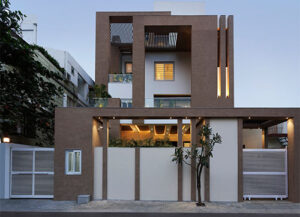
According to Sharma, one of the aims of a sustainable façade design is cost-saving for the builder as well as the end-user. We design and engineer building façades to achieve the required energy performance and integrate various techniques such as the use of solar panels, green roofs, green walls, rainwater collection, and efficient lighting. The ultimate aim is to reduce energy consumption and this translates into cost savings.
Technological developments in materials like glass have resulted in regulating heating and cooling in buildings, which is valuable in terms of both meeting energy requirements and saving money. The use of technology like the prefabricated unitised panels type of installation technique has resulted in considerable cost-savings. The cost of traditional buildings using brick, concrete, and plaster increases as we go higher, but using unitised curtain walls in these buildings lowers the cost, especially for high-rise buildings.
Both glass and aluminium are known to be among the lightest construction materials. As a result, these are much easier materials to be lifted and carried up to different levels and require fewer labour efforts in overall curtain wall installation. Combined with the lesser amount of installation time further leads to saving costs. As these panels are pre-fabricated the cost of onsite labour is also reduced.
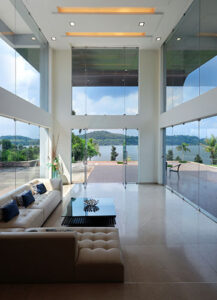
TOWARDS HOLISTIC SUSTAINABILITY – ROLE OF BUILDING CODES, BY-LAWS AND COMPLIANCE PROCESS
How does building codes like ECBC, BIS, NBC, BEE, state bylaws and compliance process help move towards holistic sustainability in buildings?
According to Ar. Chaudhary codes like ECBC (Energy Conservation Building Code), BEE (Bureau of Energy Efficiency), NBC (National Building Code), BIS (Bureau of Indian Standards), state bylaws, and compliance process supports sustainable architecture. Their goal is to provide minimum energy-efficient requirements for designing façades and their system. These codes set criteria for architects, builders, and designers to mix renewable energy sources in building designs by introducing passive design strategies. The BEE was formed to carry out new strategies to increase the conservation and use of energy according to the requirement. The façade is designed using the building codes so that the criteria of designing façades under proper norms can be fulfilled.
Building codes do help create more sustainable buildings as they provide architects and engineers with the minimum standards and tools to consult when designing building envelopes and systems. They provide us with a baseline to start from. These standards list items like materials, u-values and optic parameters of fenestrations, daylighting requirements, and systems efficiency requirements that the designers may not be aware of. These codes also compel designers to run energy models that test the performance of the building before it is built, notes Dhanuka.
There is a minimum energy performance standard that needs to be met for ECBC, NBC, and other building codes alike, observes Ar. Pashine. Factors like U-values, Visible Light Transmittance (VLT), air leakage, and Solar Heat Gain Coefficient (SHGC) are required to accommodate all the different climatic zones and belts in India.
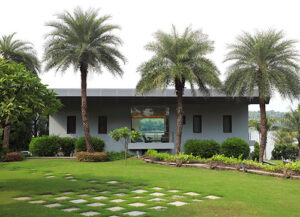
All the standards that are essential to meet the requirements for design efficiency do not specify any technology that needs to have complied with the same. The building industry is an evolving community that is very dynamic. At the same time, there is no certification process for fenestration products, notes Ar. Pashine.
Ar. Namit Jain, observes that though codes signify and suggest various necessities in terms of safety, health, usage, and sustainability, a lot of work still needs to be done towards attaining the desired results. For façades, though there are many codes, they are yet to provide a major code towards holistic sustainability, and a lot of work has still been in progress towards this.
By-Laws and building codes like ECBC, BIS, NBC, and BEE help a lot with passive and active strategies to achieve an energy-efficient design, says Ar. Jindal. For example, the National Building Codes and by-laws state the requirement of getting approval from MOEF, environmental clearance, etc. These codes also define the setbacks for the building footprint which not only helps in fire emergencies but gives access to natural light from all sides and ventilation provisions that facilitate a better-performing façade design. Similarly, easy-to-understand examples from codes like ECBC, BEE, etc. give a comparison to analyse the efficiency of your design by providing a baseline for energy consumption and lighting power density, it also gives instructions on energy-efficient equipment to be used. These codes come as a guideline to achieve performance-based design easily, adds Ar. Jindal. Energy models can be utilized to run different design iterations to provide information on energy savings from different options while also helping us understand upfront cost implications, points out Dhanuka. For example, adding an inch of insulation may add $x to the construction budget, however, it may save $2x during the lifespan of the building through electric and gas utility bill savings thus paying back for itself and more. Having said that, more than compliance, an integrated design approach by all disciplines is what makes a difference in a holistic façade design process. Some sustainability certifications like LEED and Living Building Challenge, among others, emphasise and incentivise following the integrated design process.
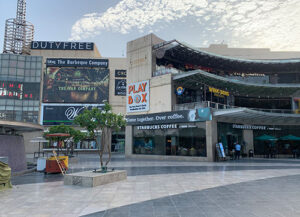
The Government of India has set up a regulatory framework that promotes climate change mitigation and green buildings across the country. The government is positioning the country to be a leader in both sustainability and the promotion of meaningful regulations and policies. India’s leadership took a bold step in energy conservation with the Energy Conservation Building Code, launched by the Bureau of Energy Efficiency in 2007 and updated in 2017 with enhanced energy performance standards.
In the last year, we have seen most of the offices empty, and people confined to their houses (less travel to work) due to the Covid–19 pandemic and the positive impact has been a reduction in pollution levels and less environmental damage. This further raises the need for having codes such as the NBC, ECBC, BE, and BIS for ensuring compliance and helping us move towards sustainable building façades points out Sharma.
According to Maanvizhi, building code compliance is essential for the success of any project and especially significant when it comes to sustainable design. A clear understanding of the building codes helps architects work towards a more environmentally friendly future. For example, ECBC specifies the building envelope requirement based on the climatic zones. ECBC specifies the recommended U-factor and R-values, window-to-wall ratio, and Skylight roof ratio which helps the architect to design a more energy-efficient building façade.
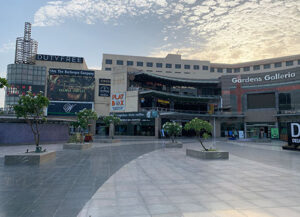
NET-ZERO ENERGY BUILDINGS
Coming to the micro-level, is net-zero energy building still a complex thought? What are the strategies to manage energy and other resource consumption through effective design of façades? We spoke to many experts on this subject to know their thoughts on it.
If we consider at the micro level, net-zero energy building is a complex thought, says Ar. Chaudhary. Seeing the requirement of energy utilisation at each phase of the building – prebuilding phase, building phase, and post-building phase – different approaches are made to acquire solutions. To attain the zero-energy façade design, the strategies which can be adopted are as follows: appropriate site selection, site planning, building form, building plans and space organization, building envelope, energy-efficient building materials, landscape design using renewable energy sources, using energy-efficient bulbs and appliances, controlling light, high-efficiency heating and cooling, ventilation equipment, recycle building material, and reusing building composition, lists out Ar. Chaudhary.

Contrary to the above, Ar. Dhanuka says that a net-zero building is not a complicated thought. It simply means the building should be capable enough to produce the amount of energy it needs. How this is done may get complicated. We need to think more holistically about what happens once the building is built, what is it intended for, and how will it be operated. The path to a net-zero building is a process, it includes: • to analyse and understand the climate of the site • use passive design techniques to reduce energy demand • make the space conditioning and lighting systems efficient to further reduce operational energy demand • and finally, the energy demand is satiated with renewable resources available on site.

Net-zero energy building is an achievable target due to the emergence of the latest technologies and innovations, agrees Maanvizhi. Design strategies shall include building orientation, high-performance envelope, daylighting, use of solar control and shading devices and natural ventilation. These design considerations will significantly reduce the dependency on active heating, cooling and lighting. We should undertake all the measures to reduce the energy consumption of the building. To satisfy the remaining energy demands, we need to use a renewable energy generation system using solar, wind and thermal, she adds.
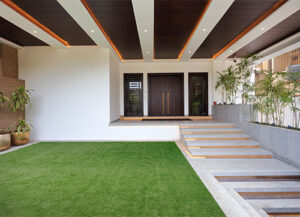
Coming to the operation of net-zero energy in a building, it is no longer complex to achieve the net-zero for energy consumption, observes Ar. Jindal. It is easily achievable by reducing the demand for energy with the optimised building envelope and the mechanical system coupled with offsetting the reduced energy consumption with renewable sources for energy generation onsite or with the help of renewable energy certificates. For the façade, adds Ar. Jindal, given the climate action goals under the Paris Agreement, the energy in terms of carbon emission for the materials used in the construction of the façade becomes very important. Therefore, achieving the net-zero in the next 10-20 years for the carbon emissions contributed through Villa Tura by Square Design the material use becomes very significant. This is mostly done by doing a life-cycle analysis of the materials or calculating the Scope 3 emissions as per GHG protocol.
Zero-energy buildings combine energy efficiency and renewable energy generation to consume only as much energy as can be produced onsite through renewable resources over a specified period, notes Renuka Sharma. Although a complex thought, it is something that is very much doable with the advancement of technology, advanced building modelling techniques, the study of the sun’s path, energy modelling, etc. Some of the strategies used are providing sunshades, awnings, double skin façades on the south side of buildings to reduce the heat and glare, use of high-performance low-E insulated glass, provision of solar panels for heating, etc.
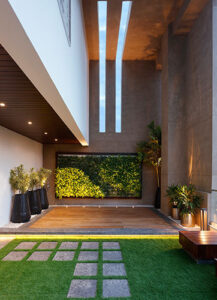
meditative quality with controlled natural light and ventilation as crucial design elements for the house.
TALKING ABOUT RENEWABLES
We are looking for options for alternative and renewable energy sources creating ministries for that we know that we need multiple sources of energy in future to sustain, states Ar. Jain. We should make our building energy-conserving and resource-optimised. Façades are the barrier between the outer climate and inner spaces. So it’s very important and effective for it to be designed and implemented in such ways so this will be a source of optimised energy utilisation and sustainability, adds Ar. Jain.
Ar. Dhanuka adds – many times designers jump to the last step of renewables when starting to design Net-Zero Energy Buildings. “I have yet to design such a building but I did get to visit one, the Unnati building situated in Noida”, said Dhanuka. All aspects of the buildings – from materials, cooling systems, daylighting, architectural lighting, wall construction, window materials and optic qualities, internal blinds, and personalised fans to the location of solar panels were carefully designed and thought out. Another important aspect of the success of a net-zero building is the post-occupancy operation of the building using the Building Management System that controls all these innovative systems and technologies.
Nearly Zero Energy Buildings (NZEBs)
One of the greatest achievements in the building sector is the emergence of Nearly Zero Energy Buildings (NZEBs), says Ar. Pallavi Pashine. NZEBs are buildings that consume the energy they generate using sustainable and renewable resources. However, doing NZEBs right requires a lot of resources and proper environmental conditions. A few techniques adopted by various NZEB builders are having a unique glazing system, energy-efficient technologies, and water conservation technologies that help in the integration and control of renewable energy sources, explains Ar. Pashine. Based on this, builders and architects can create an energy-efficient façade. The principles of the concept lie in bioclimatic architecture which focuses on the shape and the orientation of the building, solar protections, and passive solar systems. High-performance building envelopes and controlled ventilation play an important part in reducing the waste of energy. All of the techniques address heat recovery and air-sealed construction which only reduces the amount of cool air lost, adds Ar. Pashine.
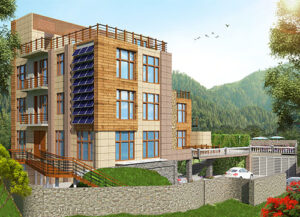
INNOVATIONS IN FAÇADE TECHNOLOGIES
Other than the passive strategies for the optimised façade design for energy efficiency there are a lot of active automation strategies that make a façade design more efficient especially in a public facility, explains Ar. Jindal. Any built environment, designed to be used by a lot of people example, office spaces, museums, healthcare, malls, etc. gains a lot of benefits from automation based on indoor thermal requirements and daylight. Façades accompanied with sensors for CO2 for operable windows to achieve better ventilation controls for individual or zone-wise thermal and lighting comfort, and automated shading of façade design concerning sun angle to avoid glare are a few of the very common practices used for energy efficiency, increased productivity and well-being of the occupants.
The innovations in façade technologies directly help in heating, cooling, daylighting, and glare control, notes Ar. Chaudhary. The façade technologies maximise natural daylight without glare or excessive heat gain. These new approaches make building energy-efficient and leave a positive impact. Talking about some of the future high-tech frames that combine utility and creativity, Ar. Chaudhary says innovative stainless steel façades serve technical functions like light control and shading. Another approach is energy-efficient Steel façades, smog neutralising façades, Bionic façades with plant-like properties, water-flow glazing systems, etc. Innovative technologies aim to develop long-term solutions for smart sustainable façades. It focuses on maximum energy-efficient and minimum resource consumption.

According to Ar. Anurag and Pallavi Pashine, biomimicry is a great innovation in the façade design sphere. This is a façade that imitates the human skin, resulting in better ventilation of a building. To achieve thermal comfort in hot climates, buildings must be well ventilated and there needs to be a good airflow throughout the area. The building’s interiors and exteriors are well connected through tiny little powers in the façade, which aids in its ventilation. Architects are making use of computers to build this new type of façade where the surface is undulating, notes Ar. Pashine. Just like the biomimicry in the façade is inspired by biology, the next innovation has its roots in mathematics. This façade saves energy through its surface, making it an innovative and eco-friendly design.
“One of the fascinating innovations – am eager to use and learn more about, is Electrochromic Glazing”, says Ar. Dhanuka. It is changing the tint of the glass with the switch as per the exterior conditions. “These will be extremely useful in composite climate types like that of Delhi – where we have an extreme summer but also a winter season and the façade needs to adapt with seasons,” she adds. Electrochromic glazing is also known as dynamic glazing, where the tint in the glass dynamically adapts to the climate outside concerning sun exposure, temperature, and humidity to maintain the set indoor conditions.
In addition, adds Ar. Dhanuka, another technology that could be useful in climates where temperatures swing continuously is sensors on the exterior building façade that can help the Building Automation System (BAS) manage temperatures indoors better. In climates like Delhi, one façade can be warmer than the other due to the rising and setting sun which can dictate different temperature needs in a building. These sensors help calibrate the BAS and provide the appropriate amount of air conditioning to the different spaces in a building thus keeping occupants comfortable while reducing energy bills.
BIPV (Building Integrated Photovoltaics) involves the use of photovoltaic materials to replace conventional building materials in parts of the building envelope like roofs, skylights or façades. In the coming years BIPV systems will be used more and more as the demand for Zero energy buildings increases, adds Sharma.
Summarising the topic, the latest façade technologies include dynamic shading, chromogenic façade, solar active façade and active ventilated façade, notes Maanvizhi. Dynamic shading façade aims at daylight control, thermal insulation, and reducing the heating and cooling loads. Chromogenic façades can change their spectral properties, making them more transparent or less transparent which results in a significant reduction of consumption of HVAC and artificial lighting. This technology improves the indoor level of visual comfort, reducing glare and excessive lighting. The Solar Photovoltaic façade is one of the solar active façades which reduces the heating and cooling loads and as well generates electricity. The active ventilated façade aims to control the airflow inside the cavity which improves the energy efficiency of the building.
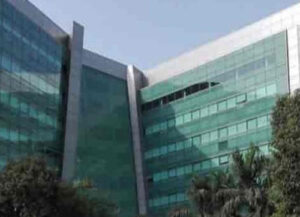
BE READY FOR THE FUTURE: ACHIEVING NET-POSITIVE ENERGY BUILDING THROUGH BETTER FAÇADE DESIGN
The net-zero energy building and net-positive energy building are similar as both are defined as a building that produces sufficient renewable energy to meet the requirement of energy consumption. To achieve a net positive energy building the following steps are followed up. The first step is to follow the design standards, the next step is to simulate the energy consumption by using energy modelling techniques and tools to optimise building orientation, glazing area, heat reduction, lighting system, landscaping, etc., and lastly using energy-efficient equipment and energy-efficient utilities, explains Ar. Chaudhary. The approach or strategies to design net-positive energy buildings are site and building selection and design and technology. Using natural ventilation and light is key to achieving net positive energy.
To be truly net-positive, adds Ar. Pashine, buildings should give back more than they take. That means buildings should do well when compared to taking away from the environment. Keeping profits aside, net-positive energy buildings are a must for a more environmentally conscious setting. While the importance of net-positive buildings cannot be overemphasised, it is nearly impossible to achieve in practice. To build a net-positive building, architects have to focus on minimising heat transmission and increasing ventilation.
The net-positive building will generate more energy than is needed for the building operations. The design approach needs to be similar to net-zero energy, however, needs to integrate a renewable energy generation system such that it generates more energy than what is needed for the building. Renewable energy can be generated through a solar photovoltaic façade and on-site renewable energy generation through wind and thermal.
For each type of building – be residential, commercial, industrial or transportation – we should aim towards getting and maximising net-positive energy by way of façades acting as a barrier/non-barrier for the intermingling of outside to inside and vice versa, notes Ar. Jain. The building orientation, north factor, approach direction, climatic and geological location, local materials availability and uses of the building need to be studied well to design and create a sustainable and net-positive energy building through better façade design, he adds.
Net-positive Energy Buildings follow a similar design approach as Net-Zero Energy Buildings called the Integrative Design Process. To be able to achieve an efficient façade design, energy modelling should be adopted by the project team right from when the project is no more than a napkin sketch, elaborates Ar. Dhanuka. According to her, energy modelling is the process of building computer models of energy systems in a building (building envelope, HVAC, lighting, operational schedules, etc.) to analyse them. These help designers understand the intricacies and challenges that a site has to offer and then design to its advantage. The different inputs by the design team can be analysed in real-time to understand which factors are most crucial for the building to produce net energy gain. In addition, it may be required to have conversations with the government and utility providers since net-positive buildings typically need to be connected to the grid to supply their excess energy back into the grid. When all the different disciplines work together from the start on reducing energy demand through innovation and collaboration, there cannot be a standardised path to achieve phenomenal net-positive energy buildings, explains Ar. Dhanuka.
Net-positive energy building is the upcoming concept that will be mandatory in developed countries within a few years, Sharma is optimistic. The total energy produced by these buildings exceeds the energy consumed by them on an annual basis. The design of the façades will require high-end energy modelling software so that architects and designers can build in the materials to determine the energy efficiency of these buildings. It will involve – the use of solar energy as a renewable energy source, the use of the sun for solar tempering, the use of energy-saving lighting/heating system/electrical appliances, and proper ventilation. The need of the hour will be to replace conventional glazing systems with interactive and intelligent façade systems. These buildings will require smart building operating systems to monitor and control the energy consumption v/s generation.
CONCLUSION
Without the innovation of façade materials, performance improvements, reduction in development costs, ease and speed of application along with more creative uses of built façades and space, the ambitions of sustainability are devalued. Façades account for a large percentage of the external building composition, so it’s only logical that this space is effectively utilised to support sustainable building design, energy savings, economic independence, reduced pollution and carbon footprint.
Top Stories
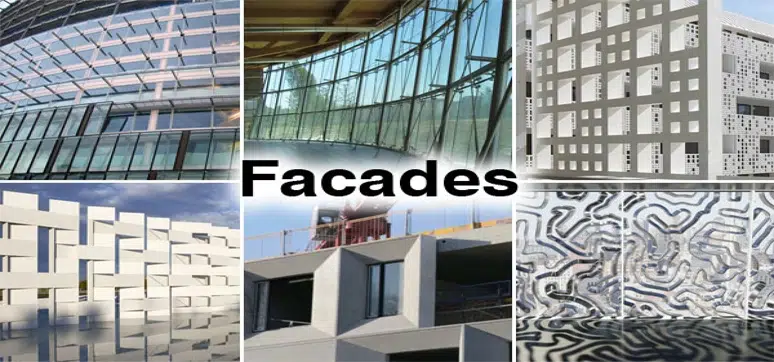
Façade Systems Market Size is Estimated to Reach USD 398.8 Billion by 2029
By: Abdul | April 16, 2024
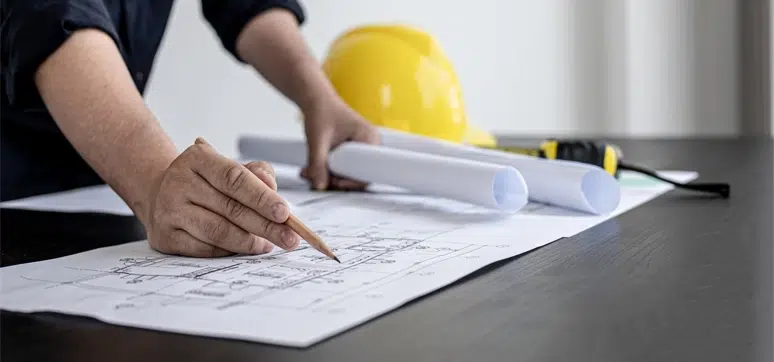
Improving Sustainability Alongside Fire Safety – Can We Deliver?
By: Abdul | April 16, 2024
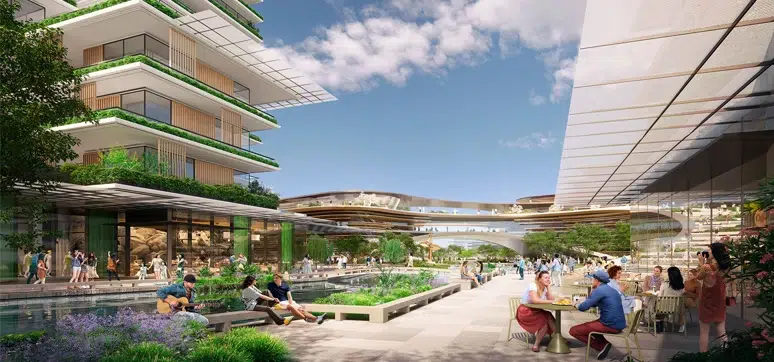
Foster + Partners Wins the Competition the New Xicen Science & Technology Centre
By: Abdul | April 9, 2024
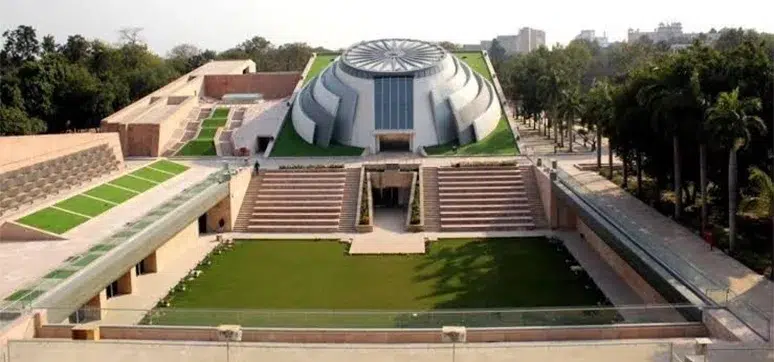
A Symbol of Architectural Brilliance & Cultural Significance
By: Abdul | April 8, 2024


